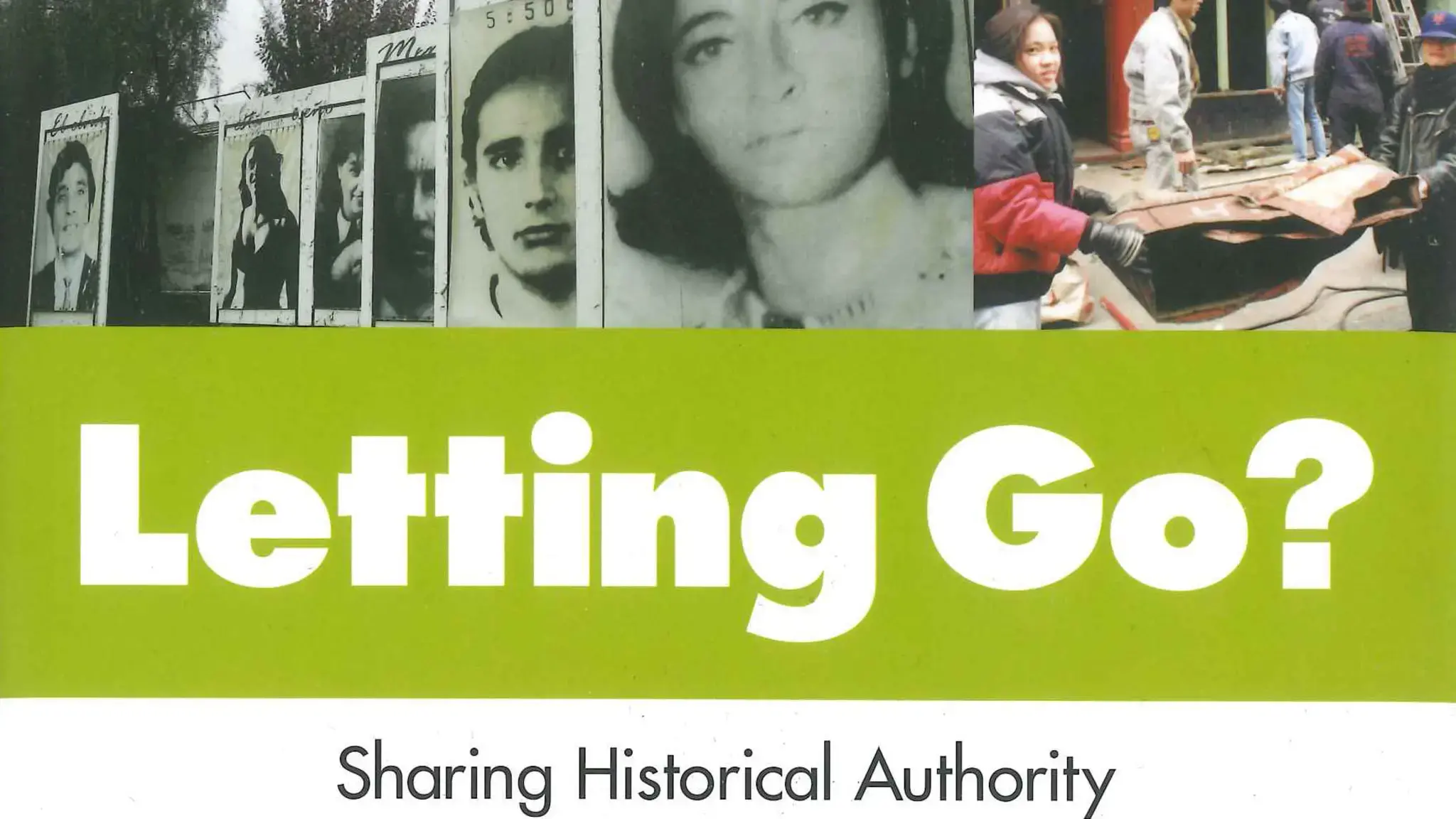

In September 2011, The Pew Center for Arts & Heritage published Letting Go? Sharing Historical Authority in a User-Generated World, an anthology edited by Bill Adair, Director of Exhibitions & Public Interpretation; Benjamin Filene, Associate Professor and Director of Public History at the University of North Carolina, Greensboro; and Laura Koloski, Senior Specialist in Exhibitions & Public Interpretation.
Distributed by Left Coast Press
To order your copy, visit the Left Coast Press website or Amazon.
Letting Go? investigates path-breaking public history practices at a time when the traditional expertise of museums and historical institutions is constantly challenged by evolving trends in technology, community-based programming, oral histories, and contemporary art. The anthology features 26 newly commissioned thought pieces, case studies, conversations, and artworks by 19 leading cultural practitioners, including Nina Simon, Michael Frisch, Kathleen McLean, Fred Wilson, and more. These contributors address questions of ownership in the world of Web 2.0 and social media—can everyone be a storyteller or curator?—and explore the implications of 21st-century audiences that create, rather than just receive, historical interpretation. Drawing on examples from history, art, and science museums, Letting Go? offers concrete examples of “shared” authority between institutions and audiences, as well as models for innovative integration of public curation and participation.
Digital technologies and social media only partially account for the willingness of museums to explore, at least tentatively, relaxing their control over historical authority. The current trend is in part a legacy of the New Social History of the 1960s and its interest in telling history “from the bottom up.” Having worked for a generation to tell stories that de-center elites, museums are now de-centering elite storytellers, too. The anti-authoritarian bent may be as well a legacy of the so-called culture wars of the 1990s. The fierce backlash against revisionist historical interpretations in the Smithsonian’s The West As America and in the planned Enola Gay exhibition may have made museum administrators more than happy to hand off interpretive authority to outsiders. Finally, we must consider the impact of changes in realms much broader than the museum world. The country’s growing ethnic diversity and its economic crises have pushed museum leaders to recognize that the field’s traditional business models need to be revamped. Instead of taking public support for granted, museums are desperate to prove their worth to their communities, a stance that makes them more receptive to outside partners, voices, and interpretations.
Emerging from the swirl of these forces, this volume began—and ends—with a question or, really, twin questions. First, do the changes that our culture is experiencing fundamentally challenge museums’ traditional relationships to their constituencies? In other words, are we experiencing a tidal wave, a sea change, or just a summer shower? From that question closely follows the second: how much will be washed away and what will the terrain look like afterwards? As our constituents have more avenues (and inclinations) for shaping, not just consuming, content, are museums actually being asked to let go of their position as historical authorities? Or is “letting go” an inexact formulation? For that matter, does the notion of “sharing” imply that historians have the prerogative to distribute historical authority, an implication that, [Michael] Frisch suggests in this volume, would undercut the supposedly collaborative or “dialogic” nature of such work?
“Authority. What is it and who has it? Or better, Who used to have it and who has it now? Museums generally, but history museums especially, have been wrestling with these questions for two decades. This useful and intelligent offering from Pew, with contributions from 21 artists, educators, and museum practitioners, may help us get closer to some answers. Or even refine the questions, which seem to be along the lines of what is lost and what is gained when we invite the public into the once-sacred realm of interpretation?”
—Museum Magazine
“The essays and conversations in Letting Go? are accessible and share important insights, best practices, and hard-won experiences with readers. Together, they would be of use to students and scholars, especially those in museum studies, history, material culture studies, anthropology, and art. Letting Go? fills a need for guides on sharing authority for new and established museum professionals and those who work with museums.”
—Museum Anthropology
“Our values direct what we do and how we do it. Letting Go? recognizes power structures in existing models and challenges us to articulate our values, reflect on our work, and sharpen our practice. Are we truly living out our values? Letting Go? provides fresh directions for meaningful, responsive and strategic community-based work.”
— Cassie Chinn, Deputy Executive Director, Wing Luke Museum of the Asian Pacific American Experience
“Technically, historical authority has always been shared with the public, but the expert public voice has not always been able to break through the practiced illusions of monumental scholarship and hallowed history. The marvelous and inspiring examples in Letting Go? will shape the aspirations of the future history museum as its practice leaders readjust their grip on ideas of authority. It will also guide institutions as they fulfill the next steps after letting go: reaching out, embracing lives, and reflecting, in the presence of the past and each other, on the complex beauties of our culture. This is a book about becoming something together, our most important process as human beings.”
—David Carr, author of Open Conversations: Public Learning in Libraries and Museums
To order your copy, visit the Left Coast Press website or Amazon.